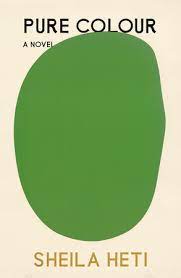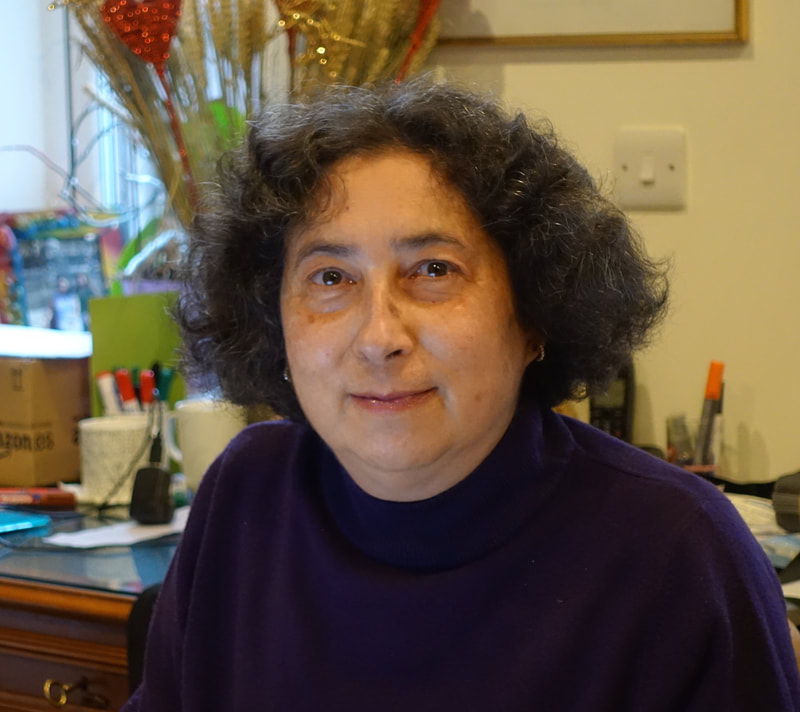Pure Colour: A Novel
|
|
The setting of Heti’s latest novel is a universe created by a God-artist from the beginning, or genesis, and ends in a possible future destruction, or apocalypse. It is the first draft of a world with many flaws which can be improved, evolving in a second draft. God stands back from his creation and contemplates it ‘like a painter standing back from the canvas’. The changes that God is going to make are in progress and will probably last forever. This is how Pure Colour, Heti’s fourth book, starts, and it follows the success of Motherhood (2018) and How Should a Person Be? (2010). The two previous books are considered autofiction as they seem to reflect directly the author’s life experience, that is, a crisis she experienced in her relationship with her partner and the decision not to have children in Motherhood, and emails and transcribed conversations appear in How Should a Person Be?
Pure Colour is fiction, though the story probably in part refers to Heti’s grieving experience after the death of her father in 2018. It is a philosophical tale that conveys in easily readable language existential concepts regarding the meaning of life and the dissolution in death. The ordinary life of the protagonist, Mira, interweaves with the lives of her beloved father, her best friend and lover, Annie, and her university friend Mattie. Spiritual exploration of the meaning of the universe and of our planet and the aims and significance of human existence are scrutinised in the narratives alongside the narration of Mira’s life from youth to middle age and as she ages until she dies. The book is not an easy read in some parts because of its lack of action and complex reasoning that involve difficult topics such as the essence of being. Nevertheless, the poetic quality of Heti’s prose and her capacity to explain and make these concepts understandable mesmerise the reader. While reading Pure Colour we need to let ourselves go and be transported to a world without borders that resembles the world of mystics or the world of pure imagination. ‘Pure’ is a recurrent word in the book; the search for purity is not only about colours, or their absence; it is also important for the fulfilment of the self, which implies that God’s creation is improved in an eventual second draft. The novel proposes a division of humanity into three main categories which the three main characters fit into: Mira, the bird-like woman, Annie, a distant fish, and the father, a warm bear. They come from eggs and have different personalities. Bird eggs are more interested in beauty and order, fish eggs are multifaceted and change constantly, and finally bear eggs aim for higher ends. They are reminders of ancient cosmology in which animal figures represented the spirits of the earth, heaven and the underworld, such as the jaguar, the bird and the snake in South American civilisations. Initially, the narration shifts from the description of the creation to Mira’s ordinary life, her job in a lamp store and her attendance at an exclusive university, the American Academy of American Critics, whose name is tautological, where she meets Mattie and Annie. Their critique is harsh, for example in the comments on Edouard Manet’s artwork, and they seem to wish to achieve high positions in the world of art or art criticism. Meditations on the importance of art, considered to be artwork as well as literature, are constantly referred to and meditated upon in the course of the narration. The artist is not only a creator that imitates God but also infuses meaning into our world through their creation, and they shape individuals too. Mira chooses art above love, even her father’s love, though she cherishes him more than anything else. She feels guilty about what she considers a betrayal of her father, but she also knows that this is how she can achieve independence and freedom. However, neither Mira nor Mattie seems to achieve their professional targets. Mattie gets married eventually and works for the rest of his life in his father-in-law’s hardware store until he dies in a car accident, which might be interpreted as suicide. Regarding Mira, we know she works in a lamp store and then in a jewellery shop, but we do not know anything about her academic or artistic achievements. They have mediocre lives, as Mira remarks. So, is the book about the failure to achieve our dreams? Or is it about the importance and acceptance of the ordinary, which reveals spiritual insights? A good part of the book is dedicated to Mira’s caring for her father during the last days of his life and to her grieving after his death. This experience is minutely examined in a journey that revisits their close relationship and is also a love story with sensual implications and spiritual intimacy. His death brings sorrow but also a feeling of ‘peace and joy, and relief’, when she is aware that ‘the universe had ejaculated his spirit into her’. She acknowledges the loss but also the wholeness she achieves after his death. ‘Colours matter’, she remarks, and the meaningfulness of the room where her father died is expressed as a maroonish light, the colour of her father’s death. Colours are therefore not only something visible but are also representations of abstract entities that define space and time. Darkness and brightness coexist in Mira’s grieving, which makes her feel empty and full at the same time. After her father’s death, Mira and her father become one body:
At a certain point in the story, her grief is transcended and her spirit is caught in a leaf; it is a new life that is suspended between life and death, heaven and earth and that evolves in an apparently humble form and yet voices boundless spirituality. At this point, Mira’s meditations on the essence of being develop further in a conversation with herself, her father inside her and indirectly with the world around her. It is a mysterious process that poses many questions and attempts to suggest some answers in a transformative journey. Environmental concerns, global warming, cruelties and devastation due to diseases and wars menace the survival of human beings and of the planet. A bleak, possibly apocalyptic future is envisaged in which the earth becomes bare and humankind almost disappears. The leaf where Mira lives or where she is transformed is like a microcosm that expands indefinitely. It is a phase in her life, like the phase of the lamp that symbolises the isolation in her youth. In her middle age she is a leaf living a secluded humble life that, however, expands spiritually after her father’s death:
Annie releases Mira from the leaf and brings her back to normal life. They had a love relationship of sorts in their university years when Mira kissed her on the back of her neck and could not stop; she was overcome by Annie’s smell and by sensuality. Annie’s presence made her feel open inside ‘like a vagina […] stretching for a very large cock’. Mira’s passion for Annie involved all her senses and opened her to new visions of love. When Mira finally visits Annie later in her new home, their relationship is over. They have different lives and have developed different views. Annie comes back when Mira is on her death bed. The room is immersed in a blue light coming from the window and she moves through life into death, repeating the mantra ‘I love you!’ The ending merges once again the surreal and the ordinary in her descent into the underworld, which is just ‘downstairs’.
The flaws of the human condition allow experimentations that are both physical and spiritual in an everyday context that in this story has metaphysical and spiritual qualities. These qualities attempt to configure new myths that transcend the contingent but also reaffirm it in an everyday perspective that is reassuring in familiar relationships. The narratives suggest that art is the final goal in which brightness and darkness, or pure colours, coalesce towards a new view that is in becoming. Sheila Heti offers a new, compelling vision of the universe and of human life in her captivating prose reiterating the importance of being present in the everyday as well as in an imaginary or spiritual dimension that might answer our pressing existential questions and provide reasons for our struggles in this devastated world. Carla Scarano D’Antonio lives in Surrey with her family. She obtained her Degree of Master of Arts in Creative Writing with Merit at Lancaster University in October 2012. Her pamphlet Negotiating Caponata was recently published by Dempsey & Windle (2020); she has also self-published a poetry pamphlet, A Winding Road (2011). She has published her work in various anthologies and magazines, and she has recently completed a PhD on Margaret Atwood’s work at the University of Reading. In 2016, she and Keith Lander won first prize in the Dryden Translation Competition with translations of Eugenio Montale’s poems. She writes in English as a second language.
|


